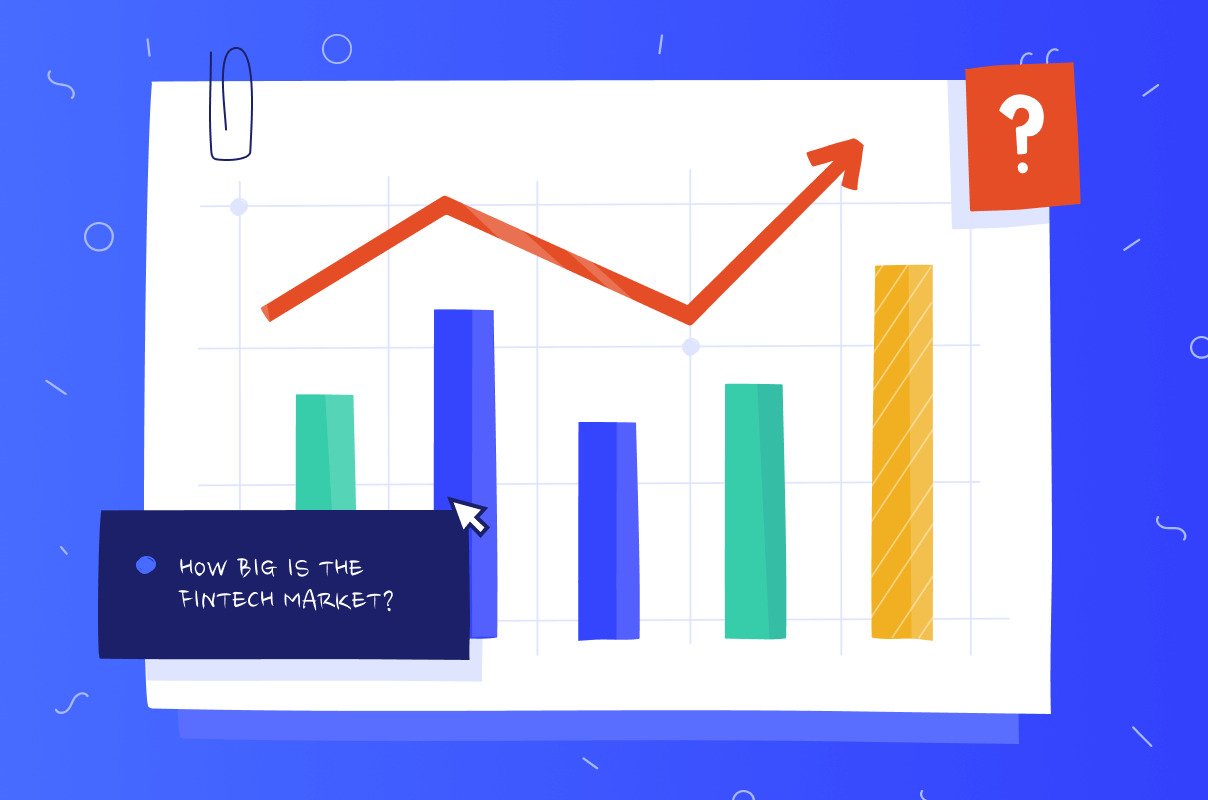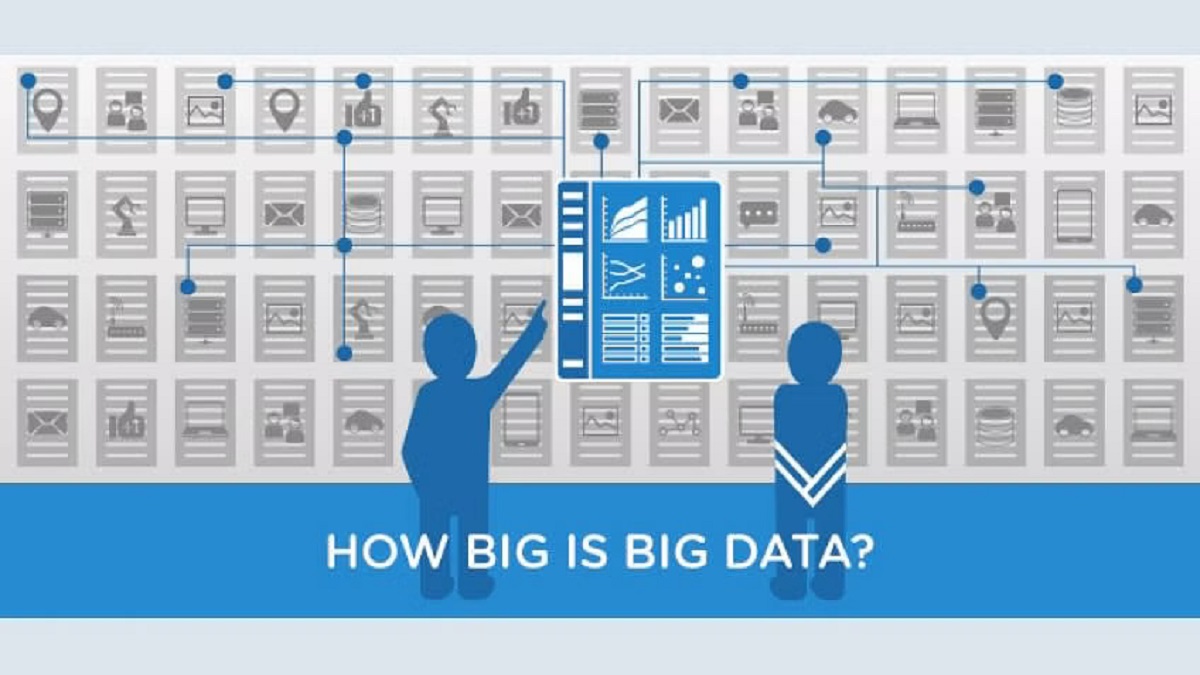Introduction
Fintech, short for financial technology, is a rapidly growing sector that has revolutionized the way we manage our finances and conduct transactions. With the integration of technology into the financial industry, fintech has disrupted traditional financial practices and brought about innovative solutions to long-standing challenges.
As the world becomes increasingly digitalized, fintech has become a vital component of the global economy. From mobile payment platforms to robo-advisors and blockchain technology, fintech encompasses a wide range of applications that are reshaping the financial landscape.
This article aims to explore the size and potential of the fintech market, as well as the key industries and major players driving its growth.
Through a combination of technological advancements, regulatory changes, and shifting consumer preferences, fintech has experienced exponential growth in recent years. It has become a driving force behind financial inclusion, eliminating barriers and providing access to financial services for underserved populations.
Additionally, fintech has revolutionized how businesses and individuals handle their finances, offering convenience, speed, and cost-efficiency. From online banking to peer-to-peer lending, fintech solutions have empowered individuals and businesses to take greater control over their financial lives.
Moreover, fintech has fostered a culture of innovation and entrepreneurship, attracting investments and creating new job opportunities. Start-ups and established financial institutions alike are investing heavily in fintech initiatives to stay competitive in the rapidly evolving digital economy.
However, as with any burgeoning industry, the fintech market is not without its challenges. Regulatory hurdles, security concerns, and consumer trust are some of the key obstacles that need to be addressed for sustainable growth. While the potential for fintech is immense, it is crucial to strike a balance between innovation and regulation to ensure long-term success.
Despite the challenges, the fintech market shows no signs of slowing down. With advancements in artificial intelligence, machine learning, and the Internet of Things, the potential for further disruption and innovation in fintech is limitless.
In the following sections, we will delve deeper into the growth and current size of the fintech market, examine the key industries within it, identify the major players driving its progression, and discuss both the challenges and opportunities that lie ahead.
Definition of Fintech
Fintech, a portmanteau of “financial technology,” refers to the innovative use of technology to deliver financial services and streamline financial processes. It encompasses a broad range of applications that leverage digital systems, software, and platforms to transform traditional financial services.
At its core, fintech aims to simplify and enhance financial activities and transactions for individuals and businesses. It encompasses various sectors, including banking, payments, lending, insurance, wealth management, and more.
One of the key characteristics of fintech is its customer-centric approach. Fintech companies prioritize user experience, convenience, and accessibility, offering tailored solutions that meet the evolving needs and preferences of modern consumers. By integrating technology, fintech eliminates the need for physical infrastructure and reduces the costs and complexities associated with traditional financial services.
Fintech solutions can be found in both B2B (business-to-business) and B2C (business-to-consumer) environments. For businesses, fintech offers innovative tools and platforms for improving operational efficiency, risk management, and financial decision-making. For consumers, fintech provides user-friendly applications and services for day-to-day financial management, investments, and transactions.
Some of the prominent examples of fintech include:
- Mobile payment platforms such as Apple Pay, Google Pay, and Venmo, which enable users to make secure and convenient transactions using their smartphones.
- Online lending platforms like LendingClub and Funding Circle, which connect borrowers with investors, facilitating faster loan approvals and disbursements.
- Robo-advisors such as Betterment and Wealthfront, which use algorithms and automation to provide low-cost investment advice and portfolio management.
- Blockchain technology, which underpins cryptocurrencies like Bitcoin and Ethereum, offering transparent and secure decentralized financial transactions.
- Insurtech companies like Lemonade and Oscar Health, which leverage technology to simplify insurance processes, personalize coverage, and improve claims management.
While fintech often operates independently, it also collaborates with traditional financial institutions to create synergies and provide better services to customers. This collaboration is referred to as “fintegration” and is increasingly common as both established financial institutions and fintech start-ups recognize the benefits of partnering together.
In summary, fintech represents the intersection of finance and technology, providing innovative solutions that transform the way financial services are delivered and consumed. With its customer-centric approach and emphasis on technological advancements, fintech is reshaping the financial landscape and driving the evolution of the global economy.
The Evolution of the Fintech Market
The fintech market has undergone significant evolution since its inception, propelled by technological advancements, changing consumer behaviors, and regulatory developments.
The roots of fintech can be traced back to the late 20th century when the financial industry began embracing digital technology. The adoption of online banking and electronic trading platforms laid the foundation for the digitization of financial services. However, it was in the early 2000s that fintech started gaining momentum, driven by the proliferation of smartphones and the internet.
The launch of platforms like PayPal, founded in 1998, paved the way for peer-to-peer online payments and marked the beginning of the fintech revolution. This led to an explosion of fintech start-ups focused on disrupting traditional banking and finance.
Following the global financial crisis of 2008, which exposed the vulnerabilities and inefficiencies in the traditional financial system, the demand for better, faster, and more accessible financial services increased. Fintech start-ups identified this opportunity and capitalized on it, introducing innovative solutions that challenged established financial institutions.
Over the years, fintech solutions have evolved to encompass a wide range of applications. From digital wallets and mobile payment solutions to crowdfunding platforms and robo-advisors, fintech has transformed various areas of the financial industry. These advancements have not only improved customer experience but also increased efficiency, transparency, and accessibility.
One area where fintech has made significant strides is in financial inclusion. By harnessing technology and alternative data sources, fintech has bridged the gap between individuals and financial services. It has enabled people in underserved communities and developing countries to access banking, lending, and insurance services that were previously out of reach.
Furthermore, the rise of fintech has spurred collaboration between traditional financial institutions and start-ups. Banks have realized the potential of fintech and have started partnering with or acquiring fintech firms to modernize their operations, enhance their digital offerings, and gain a competitive edge. This collaboration, often referred to as “fintech-bridging,” has created a symbiotic relationship, leveraging the expertise and infrastructure of legacy financial institutions with the agility and innovation of fintech start-ups.
Regulatory authorities have also played a role in shaping the evolution of the fintech market. As fintech grew, regulators recognized the need to establish guidelines and frameworks to ensure consumer protection, security, and stability in the financial system. This led to the emergence of regulatory sandboxes, special licenses, and frameworks specific to fintech, providing a conducive environment for innovation while managing risks.
Looking ahead, the fintech market is expected to continue its rapid evolution. Advancements in technologies like artificial intelligence, machine learning, and blockchain are poised to further disrupt and revolutionize financial services. As consumer expectations continue to change and digital transformation accelerates across industries, fintech will remain at the forefront of innovation, reshaping the way we manage our finances and interact with the financial world.
Current Size of the Fintech Market
The fintech market has experienced remarkable growth in recent years, driven by technological advancements and increasing adoption of digital financial solutions. According to a report by Allied Market Research, the global fintech market is projected to reach a value of $305.7 billion by 2023, with a compound annual growth rate (CAGR) of 22.17% from 2017 to 2023.
North America and Europe have traditionally been leading regions in the fintech landscape, with the presence of established financial hubs and a tech-savvy population. However, Asia-Pacific has emerged as a strong contender, fueled by the rapid digitization of economies and the increasing adoption of mobile payment solutions.
Within the fintech market, several sectors have witnessed significant growth. Digital payments, for instance, have gained tremendous traction, fueled by the increasing popularity of mobile wallets, contactless payments, and peer-to-peer payment platforms. The rise of e-commerce and the need for frictionless and secure transactions have driven the growth of digital payment solutions.
Another thriving sector within fintech is online lending. Peer-to-peer (P2P) lending platforms have disrupted the traditional lending landscape, connecting borrowers with individual investors or institutional lenders. These platforms offer faster loan approval processes, competitive interest rates, and access to credit for individuals and businesses that might be underserved by traditional financial institutions.
Additionally, digital banking and wealth management have experienced significant growth, with consumers embracing the convenience and accessibility of these services. Digital banks, also known as neobanks, offer online-only banking services without the need for physical branches. They provide users with features like easy account opening, budgeting tools, and instant fund transfers.
Wealth management has also become more democratized through the rise of robo-advisors. These digital platforms utilize algorithms to provide personalized investment advice and automated portfolio management at a fraction of the cost of traditional financial advisors. The low-cost and user-friendly nature of robo-advisors have attracted a broad range of investors, including millennials and first-time investors.
Insurance technology, or insurtech, is another segment within the fintech market that has gained traction. Insurtech start-ups are leveraging technology, data analytics, and artificial intelligence to enhance underwriting processes, automate claims handling, and offer personalized insurance solutions. The growing demand for efficiency and personalized customer experiences in the insurance industry has propelled the growth of insurtech.
While the fintech market is expanding rapidly, it is important to note that the industry is still evolving. Start-ups continue to innovate, and established financial institutions are investing in fintech initiatives to stay competitive. The entry of big tech companies into the financial sector is also expected to reshape the market dynamics and drive further growth.
However, despite the significant growth and potential of the fintech market, challenges remain. Regulatory complexities, cybersecurity concerns, and the need to gain consumer trust are critical factors that need to be addressed for sustainable growth. As the fintech ecosystem continues to mature, establishing robust regulatory frameworks and ensuring data privacy and security will be essential.
In summary, the fintech market is experiencing rapid growth, fueled by technological advancements, changing consumer behaviors, and regulatory developments. Digital payments, online lending, digital banking, wealth management, and insurtech are among the key sectors driving the growth of the fintech market. As the market continues to evolve, it presents both opportunities and challenges for fintech start-ups, established financial institutions, and consumers alike.
Key Industries in the Fintech Market
The fintech market has permeated various sectors within the financial industry, transforming traditional practices and creating new opportunities. Several key industries have experienced significant disruption and growth due to the advent of fintech solutions.
1. Banking: Fintech has revolutionized the banking industry, offering alternative banking solutions to traditional brick-and-mortar institutions. Digital banks, also known as neobanks, provide online-only banking services without the need for physical branches. They offer features such as easy account opening, budgeting tools, real-time notifications, and seamless digital transactions. Fintech has also enabled the development of digital identity verification, biometric authentication, and digital onboarding processes, enhancing the security and convenience of banking services.
2. Payments: Fintech has transformed the way we make payments, making transactions faster, more convenient, and secure. Mobile payment platforms like Apple Pay, Google Pay, and Samsung Pay allow users to make seamless payments using their smartphones. Peer-to-peer payment platforms such as Venmo and Zelle have gained popularity, enabling users to send money to friends and family with just a few taps on their mobile devices. Additionally, fintech has facilitated the growth of contactless payments, QR code payments, and digital wallets, reducing the reliance on physical cash and traditional payment methods.
3. Lending: Fintech has disrupted the lending industry through innovative models and technologies. Peer-to-peer (P2P) lending platforms connect borrowers directly with lenders, cutting out the need for traditional financial intermediaries. These platforms offer faster loan approval processes, competitive interest rates, and greater accessibility to credit for individuals and small businesses. Fintech has also facilitated the growth of alternative lending models, such as crowdfunding and marketplace lending, providing new avenues for borrowers and investors to connect.
4. Wealth Management: Fintech has democratized wealth management by providing accessible and affordable investment solutions. Robo-advisors, powered by algorithms and automation, offer personalized investment advice and portfolio management services to investors at a fraction of the cost of traditional financial advisors. These platforms use data analytics and machine learning to create diversified investment portfolios tailored to individual risk profiles and financial goals. Additionally, fintech has facilitated the growth of social trading and investment platforms, allowing users to follow and replicate the trades of successful investors.
5. Insurance: Fintech has transformed the insurance industry, leading to the emergence of insurtech. Insurtech start-ups leverage technology, data analytics, and artificial intelligence to streamline insurance processes, enhance underwriting practices, and offer personalized insurance products. These companies provide digital platforms and tools that simplify insurance purchase, claims filing, and policy management. Fintech has also enabled the development of new insurance models, such as peer-to-peer insurance and on-demand insurance, catering to the evolving needs and expectations of consumers.
6. Regtech: Regulatory technology, or regtech, is a growing sector within the fintech market. Regtech solutions leverage technology to help financial institutions comply with regulatory requirements efficiently and effectively. These solutions automate compliance processes, monitor transactions for fraudulent activities, ensure data privacy and security, and enable regulatory reporting. Regtech has become increasingly vital as financial regulations continue to evolve and become more complex.
These key industries within the fintech market are continuously evolving and innovating. Fintech solutions have enhanced user experiences, increased efficiency, and expanded access to financial services. As technology continues to advance and consumer expectations evolve, the fintech market will continue to disrupt and transform the financial industry.
Major Players in the Fintech Market
The fintech market is comprised of a diverse range of players, including both established financial institutions and innovative start-ups. These players are driving the evolution and growth of the fintech industry through their groundbreaking technologies and forward-thinking strategies. Let’s take a closer look at some of the major players in the fintech market.
1. PayPal: As one of the pioneers in online payments, PayPal remains a dominant player in the fintech industry. The platform enables individuals and businesses to make secure online transactions and facilitates cross-border payments. With its user-friendly interface and widespread merchant acceptance, PayPal continues to be a popular choice for e-commerce transactions.
2. Square: Square has revolutionized the way small businesses accept payments with its easy-to-use point-of-sale system. The Square Reader allows businesses to accept credit card payments using a mobile device, making it accessible to even the smallest of merchants. Square has also expanded its offering to include financial services like business loans, payroll processing, and inventory management.
3. Ant Group: Ant Group, affiliated with Alibaba Group, is a leading fintech powerhouse in China. It operates Alipay, a digital payment platform with hundreds of millions of users and an extensive network of partner merchants. Ant Group has expanded its services to include wealth management, consumer lending, insurance, and other financial products.
4. Stripe: Stripe has gained significant traction in the payment processing industry by providing businesses with a powerful yet simple-to-integrate platform. It offers a suite of developer-friendly tools and APIs that allow businesses to accept online payments securely. Stripe stands out for its emphasis on smooth user experiences and a developer-friendly approach.
5. Robinhood: Robinhood disrupted the investment landscape by offering commission-free trading and a user-friendly mobile app. The platform’s simplicity and accessibility have attracted a new generation of investors, particularly millennials, who are looking for low-cost investment options. Robinhood’s success has challenged traditional brokerage firms and sparked a wave of similar commission-free trading platforms.
6. Revolut: Revolut is a digital banking app that provides users with a range of financial services, including currency exchange, international money transfers, and budgeting tools. With its multi-currency accounts and competitive exchange rates, Revolut has gained popularity among frequent travelers and international businesses.
7. Coinbase: Coinbase is a leading cryptocurrency exchange that allows users to buy, sell, and store various cryptocurrencies. With the growing interest in cryptocurrencies, Coinbase has become a trusted platform for investors and traders. It offers a user-friendly interface, robust security measures, and a wide range of supported digital assets.
8. SoFi: SoFi, short for Social Finance, started as an online lender specializing in student loan refinancing. Since then, it has expanded its services to include personal loans, mortgages, investment accounts, and even an online banking platform. SoFi has built a strong reputation for its customer-centric approach and innovative financial solutions.
9. Adyen: Adyen is a global payments technology company that offers end-to-end solutions for merchants. Its platform provides seamless payment processing across various channels, including online, in-store, and mobile. Adyen stands out for its focus on international payments and its ability to handle complex payment flows and local regulations.
10. Chime: Chime is a neobank that offers a range of digital banking services aimed at providing a user-friendly and accessible banking experience. It focuses on eliminating fees, providing early access to direct deposits, and offering budgeting tools to help users manage their finances effectively. Chime has gained traction among millennials and individuals looking for a modern and transparent banking experience.
These are just a few examples of the major players in the fintech market. However, the industry is dynamic and continuously evolving, with new players emerging and established players adapting to stay competitive. As technology continues to advance and consumer preferences shift, the fintech landscape will surely see further innovation and disruption.
Growth Potential of the Fintech Market
The fintech market has exhibited significant growth over the past decade, but its potential for further expansion remains immense. Technological advancements and changing consumer behaviors are key driving forces behind this growth, creating opportunities for new innovations and market disruptions.
One factor contributing to the growth potential of the fintech market is the increasing adoption of digital financial solutions. As more people become tech-savvy and comfortable with digital platforms, they are embracing fintech services for their convenience, accessibility, and cost-effectiveness. The rise of smartphones and internet connectivity has further propelled this trend, enabling individuals to access financial services anytime and anywhere.
Fintech has also seen rapid growth in emerging markets, where there is a significant unbanked and underbanked population. Fintech solutions provide an opportunity to bridge the financial inclusion gap by offering basic financial services to those who previously had limited access. By leveraging mobile technology and alternative data sources, fintech can extend banking, lending, and insurance services to underserved populations, thereby stimulating economic growth and development.
Furthermore, fintech is poised to benefit from the ongoing digital transformation across industries. As businesses shift toward online and digital operations, they require sophisticated financial services that integrate seamlessly into their processes. Fintech solutions offer tailored financial tools for businesses, including payment processing, payroll management, and working capital loans. The growing demand for digital banking and other financial services in the business sector presents significant growth opportunities for fintech providers.
Another growth driver in the fintech market is the increasing focus on data analytics and artificial intelligence (AI). Fintech companies are leveraging vast amounts of data to gain insights into consumer behavior, risk assessment, and investment trends. By utilizing AI algorithms, fintech providers are able to deliver personalized financial advice, automate processes, and enhance fraud detection, resulting in more efficient and accurate decision-making.
The integration of blockchain technology is also expected to drive growth in the fintech market. Blockchain offers secure, transparent, and decentralized transactions, making it an ideal solution for improving payment processing, supply chain management, and identity verification. As blockchain applications continue to be explored and implemented across industries, the fintech market stands to benefit from this technology, especially in areas such as cross-border payments and digital identity verification.
Additionally, regulatory initiatives are shaping the growth potential of the fintech market. Governments and regulatory authorities are increasingly recognizing the importance of fostering innovation in the financial sector while ensuring consumer protection and financial stability. The implementation of supportive regulations, such as the creation of regulatory sandboxes and the development of open banking frameworks, can encourage fintech innovation and attract investment, facilitating sustainable growth in the market.
Overall, the growth potential of the fintech market is substantial, driven by technological advancements, increasing consumer adoption, and regulatory developments. Fintech providers have the opportunity to continue disrupting traditional financial practices and develop innovative solutions to address evolving customer needs. As emerging technologies like AI, blockchain, and data analytics continue to mature, the fintech market is poised for continued expansion and transformation.
Challenges in the Fintech Market
The fintech industry is not without its challenges, as it navigates through a complex landscape of regulatory, technological, and consumer-related hurdles. While the growth potential of the market is immense, several key challenges must be addressed for sustainable development.
One of the main challenges in the fintech market is regulatory compliance. As fintech continues to disrupt traditional financial practices, regulators are faced with the task of balancing innovation with ensuring consumer protection, financial stability, and preventing money laundering and fraud. Navigating complex and often fragmented regulatory frameworks can be a significant challenge for both established financial institutions and fintech start-ups, as they strive to comply with varying requirements across different jurisdictions.
Additionally, cybersecurity is a critical concern in the fintech market. As digital financial services expand, so do the risks of data breaches and cyber-attacks. Fintech companies handle vast amounts of sensitive customer data, making them attractive targets for hackers. Protecting customer information and ensuring the resilience of fintech platforms against cyber threats require robust security measures and continuous monitoring, which can be costly and challenging to implement effectively.
Consumer trust is another challenge in the fintech market. While fintech offers convenience and innovative financial solutions, some individuals still have reservations when it comes to entrusting their finances to digital platforms. Addressing concerns around data privacy, security, and transparency is crucial to building and maintaining consumer trust in the fintech industry.
Moreover, the rapid pace of technological advancements poses challenges for fintech companies. Staying up to date with new technologies and incorporating them into existing systems can be a resource-intensive process. Fintech providers must continuously invest in research and development to remain competitive and offer cutting-edge solutions to their customers.
Access to funding is another hurdle for fintech start-ups. While investment in the fintech sector has grown over the years, securing sufficient capital for research, development, and scaling operations can be difficult, particularly for early-stage companies. The ability to attract investments and secure partnerships is often crucial for fintech start-ups to thrive in a competitive market.
Furthermore, interoperability and collaboration between fintech companies and traditional financial institutions can present challenges. Established banks and financial institutions often have legacy systems and processes that may not seamlessly integrate with fintech solutions. Overcoming interoperability hurdles requires collaboration and open communication between traditional financial players and fintech innovators.
Lastly, regulatory sandbox limitations can hinder the growth and development of the fintech market. Regulatory sandboxes provide a controlled environment for fintech companies to test their innovative solutions without immediately complying with all regulatory requirements. However, the scope and duration of these sandboxes can vary significantly across jurisdictions, limiting the potential impact and scalability of fintech innovations.
Addressing these challenges requires collaboration among stakeholders, including fintech companies, regulatory authorities, traditional financial institutions, and consumers. Governments and regulators must strike a balance between fostering innovation and maintaining regulatory oversight. Fintech companies must prioritize cybersecurity measures, privacy protection, and transparency to build and maintain consumer trust. Continuous investment in research and development is crucial for staying ahead in a rapidly evolving technological landscape.
Despite the challenges, the fintech market continues to thrive, driven by its innovative solutions and the demand for digital financial services. Overcoming these hurdles through collaboration, industry-wide standards, and effective regulation will unlock the full potential of fintech, leading to sustainable growth and long-term success in the market.
Opportunities in the Fintech Market
The fintech market is ripe with opportunities, driven by technological advancements, changing consumer behaviors, and evolving regulatory landscapes. Fintech companies are well-positioned to capitalize on these opportunities and reshape the future of the financial industry in several key areas.
One of the significant opportunities in the fintech market lies in financial inclusion. Despite advancements in technology, a significant portion of the global population remains unbanked or underbanked. Fintech solutions, such as digital wallets and mobile banking apps, can provide individuals in underserved communities with access to basic financial services, including payments, savings, and lending. By leveraging alternative data sources and mobile technology, fintech players can bridge the financial inclusion gap and empower individuals to participate in the formal economy.
Furthermore, the growth of e-commerce presents a tremendous opportunity for fintech companies. With the rise of online shopping, digital payment solutions are in high demand. Fintech companies can offer secure and convenient payment processing services, including mobile wallets, QR code payments, and seamless checkout experiences. By leveraging big data analytics and AI, fintech companies can also provide personalized recommendations, targeted offers, and improved fraud detection to enhance the consumer experience and build customer loyalty.
Small and medium-sized enterprises (SMEs) also represent a significant opportunity for fintech players. SMEs often face challenges accessing finance, managing cash flow, and navigating complex banking processes. Fintech solutions can provide streamlined and efficient lending platforms, enabling SMEs to secure loans quickly and obtain tailored financial advice. Fintech companies can also offer digital accounting tools, invoice financing, and working capital management services to support the growth and sustainability of SMEs.
Another promising opportunity lies in the adoption of blockchain technology. Blockchain offers secure, transparent, and decentralized transactions, providing opportunities for more efficient cross-border payments, smart contracts, and digital identity verification. Fintech companies can leverage blockchain to reduce transaction costs, enhance security, and improve traceability in various financial services, such as remittances, trade finance, and Know Your Customer (KYC) processes.
The application of AI and machine learning presents significant opportunities in the fintech market as well. Fintech companies can utilize AI algorithms to analyze vast amounts of data, conduct risk assessments, and deliver personalized financial advice. AI-powered chatbots and virtual assistants can enhance customer service experiences and provide instant support. As AI technology continues to evolve, the opportunities for fintech to provide advanced wealth management, fraud detection, and risk management solutions will continue to expand.
The collaboration between fintech companies and traditional financial institutions presents another opportunity for innovation. As established banks and financial institutions recognize the value of fintech solutions, partnerships can be formed to enhance customer experiences and provide comprehensive financial services. Fintech players can leverage the infrastructure, customer base, and regulatory expertise of traditional institutions while offering agility, innovation, and technology-driven solutions.
Lastly, the proliferation of data provides fintech companies with a vast opportunity for insights and personalized services. By leveraging data analytics, machine learning, and predictive modeling, fintech companies can deliver tailored financial products and services that align with individual customer preferences and needs. The ability to harness data effectively can lead to enhanced risk assessments, better fraud prevention, and improved customer experiences.
Overall, the fintech market is full of opportunities for companies that are willing to innovate, adapt, and address evolving customer needs. By leveraging technology, embracing financial inclusion, exploring blockchain applications, and embracing AI and data analytics, fintech companies can continue to disrupt and reshape the financial industry.
Conclusion
The fintech market is a dynamic and rapidly growing sector that is reshaping the way we manage our finances and interact with financial services. With the integration of technology into traditional financial practices, fintech has brought about innovative solutions, disrupted established industries, and created opportunities for financial inclusion and digital transformation.
Throughout this article, we have explored various aspects of the fintech market, including its definition, evolution, current size, key industries, major players, growth potential, challenges, and opportunities. Fintech has shown immense potential for further expansion, driven by factors such as increasing consumer adoption, technological advancements, and regulatory developments.
While the fintech market presents numerous opportunities, it also faces challenges that need to be addressed for sustainable growth. These challenges include regulatory compliance, cybersecurity risks, consumer trust, technological advancements, access to funding, and interoperability. Overcoming these hurdles requires collaboration among stakeholders and a focus on innovation, security, and consumer protection.
Looking ahead, the future of the fintech market is bright. Technological advancements such as AI, blockchain, and data analytics will continue to drive innovation and reshape the financial landscape. Fintech companies will have opportunities to enhance financial inclusion, transform payment systems, improve lending practices, revolutionize wealth management, and offer personalized and accessible financial solutions.
The collaboration between fintech companies, traditional financial institutions, regulators, and consumers will be crucial in unlocking the full potential of the fintech market. Regulatory frameworks must strike a balance between fostering innovation and ensuring consumer protection. Traditional financial institutions need to adapt and collaborate with fintech innovators to enhance their offerings and remain competitive. Consumers must embrace the digital transformation and trust fintech solutions to unlock the benefits they offer.
In conclusion, the fintech market is an exciting and transformative industry with immense growth potential. As technology continues to advance and consumer behaviors evolve, fintech companies have the opportunity to shape the future of finance, drive financial inclusion, and empower individuals and businesses to take control of their financial lives. By addressing challenges, capitalizing on opportunities, and fostering collaboration, the fintech market is poised for a future of continued innovation and positive disruption.

























